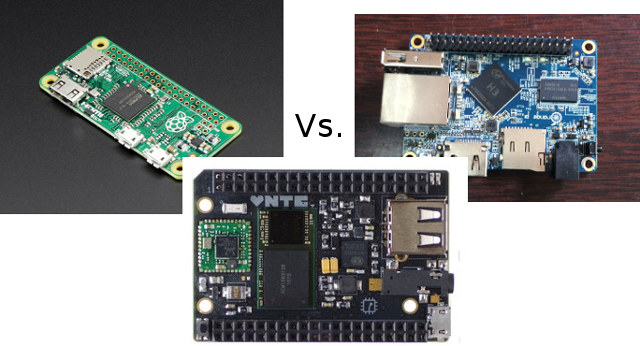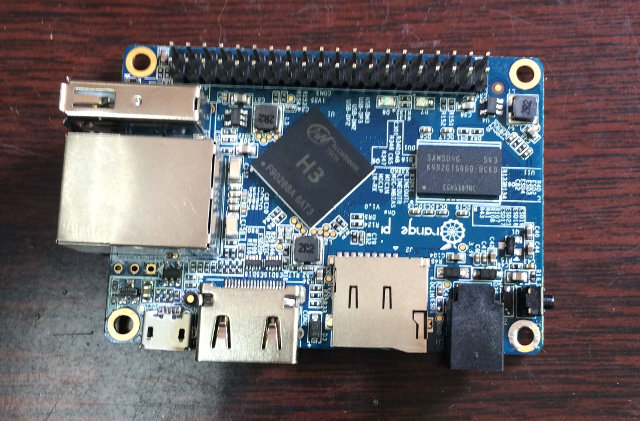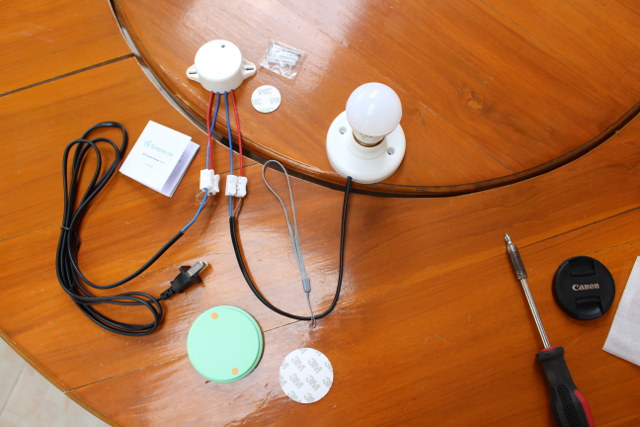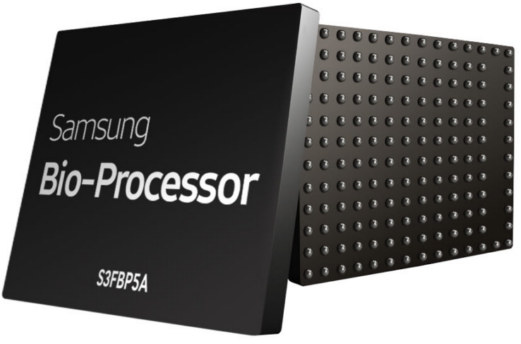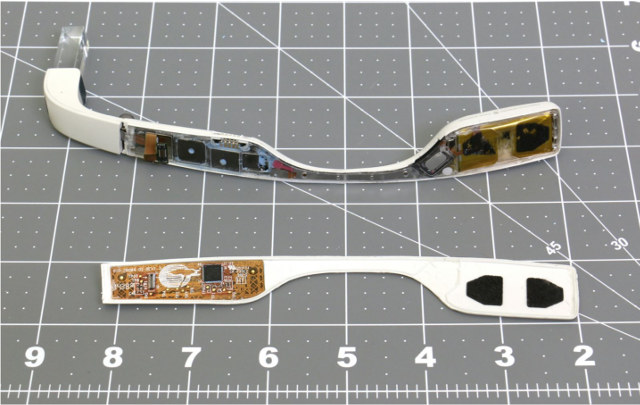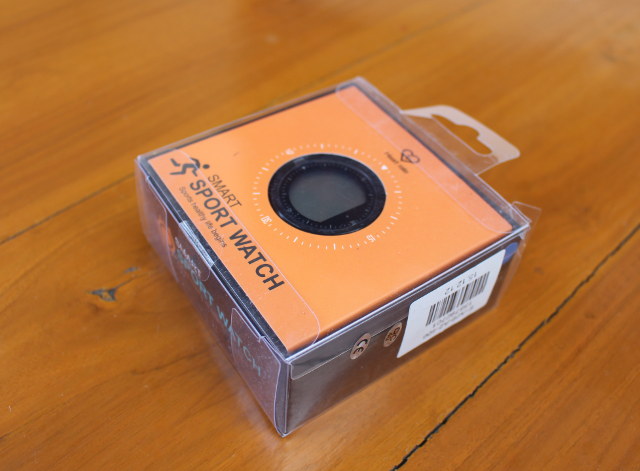With Raspberry Pi Zero, Next Thing C.H.I.P, and Orange Pi One, we now have have three ARM Linux development boards selling (now or soon) for less than $10 excluding shipping and taxes. So I’d think it would be interesting to compare the features of the boards, and prices for different use cases. The comparison table below shows the three boards features side-by-side with items highlighted in green for the best or extra features, and in red for the weakest. Some cells will have to be filled later as data is currently not available (marked TBD). Raspberry Pi Zero C.H.I.P Orange Pi One Processor Broadcom BCM2835 single core ARM11 processor @ 1GHz (~1250 DMIPS) Allwinner R8 Cortex A8 processor @ 1 GHz (2000 DMIPS) Allwinner H3 quad core Cortex A7 processor @ 1.2 GHz (4x 2280 DMIPS) GPU VideoCore IV ARM Mali-400 ARM Mali-400MP2 Video Decoding 1080p30 for H.264, MPEG2* and […]
Orange Pi One is a $10 Quad Core Board with Ethernet and HDMI
Until recently, Orange Pi PC was probably the most cost efficient ARM hardware, but with the launch of Raspberry Pi Zero, and to some extent C.H.I.P computer, they had some competitors in the ultra low cost space, so Shenzhen Xunlong Software developed two more cost effective Orange Pi boards, with Orange Pi One selling for $9.99 with Ethernet, and Orange Pi Lite for $12 with WiFi, also referred to as versions B and A. Orange Pi One & Lite (preliminary) Specifications: SoC – Allwinner H3 quad core Cortex A7 @ 1.2 GHz with an ARM Mali-400MP2 GPU up to 600 MHz System Memory – 512 MB DDR3 Storage – micro SD card slot Video & Audio Output – HDMI Connectivity Orange Pi One – 10/100M Ethernet Orange Pi Lite – WiFi USB Orange Pi One – 1x USB 2.0 host ports, 1x micro USB OTG port Orange Pi Lite – […]
Ten Most Popular Posts of 2015 and Statistics on CNX Software
In the second part of 2014, we saw a big jump in performance thanks to Cortex A15 and A17 based SoCs, and higher clocked Cortex A9 processors such as Rockchip RK3288 and Amlogic S812, but in 2015, TV box companies have focused on lowering the price and adding features such as HDMI 2.0, instead of looking for higher and higher CPU and GPU performance, and they’ve also moved to 64-bit ARM platform. Intel also continued its foray into low cost HDMI sticks and mini PCbased on Bay Trail, and later on Cherry Trail based devices. The development boards story was also very much about lower cosst with the $15 Orange Pi PC, follow a few months later by the $5 Raspberry Pi Zero, although people looking for performance at any price still saw the release of Nvidia Jetson TX1 board. It’s was also a big year for IoT with the […]
Review and Teardown of Simplelink Self-Powered Power Switch
After I wrote about SimpleLink Batteryless power switch and receiver, the company decided to sent me a kit to try out by myself. So in this review, I’ll checkout the kit, install a demo to show how it works, and finally have a look at the internals. The kit include a power cord with a US plug and a holder and corresponding light bulb that you need to connect to the corresponding red and blue wire of the receiver (white cylinder), and you can control with the green power battery-less switch. Two 3M double face stickers are also included for the receiver and switch, as well as a strap for the switch, a screw set for either the light holder or receiver, and a user’s manual shown below. Installation is pretty self-explanatory, and you just need to connect the blue and red cables to the input (mains) and output (light) […]
Why Doesn’t your Android TV Box Play Full HD or 4K Videos in Netflix?
I’m not a Netflix user myself, but I know many of my readers are, and a frequent complain was the inability to play Full HD or 4K content, except on specific devices such as WeTek Core or Nvidia Shield Android TV. Until now, I thought most TV box manufacturers did not get DRM and Netflix support to reduce costs, but after reading one article about this very subject on AndroidPCReview, I realized it was more complicated than that. Beside the obvious hardware requirements that you need a Full HD or 4K capable player and television, the device needs to be certified by Google, and Widevine Level 1 DRM is required to stream anything above SD resolution from premium apps such as HBO Go or Netflix. However while many devices are certified by Google, only a few are officially supported by Netflix. The company also ranks device by categories such as […]
Samsung S3FBP5A Bio-Processor Targets Fitness Tracking Wearables
We now have many wearables capable of monitoring your activities, be it smartwatches or fitness tracker, and usually they are comprised of several small sensor chips, a low power micro-controller, a Bluetooth radio, and possibly some other ICs . Samsung has been designing and just launched a bio-processor to regroup most of those features into a single chip which should only require a fourth of the area required by current multi-chip solutions. While the press release did not mention the part number, the included picture – shown above – sort of gave a clue, and Samsung S3FBP5A bio-processor has the following specifications: MCU – ARM Cortex-M4 Memory – 256 KB RAM Storage – 512 KB flash DSP Sensors – 5 Analog frontends (AFEs) measuring: PPG (photoplethysmography) ECG (electrocardiography) Skin temperature BIA (bioelectrical impedance analysis) Galvanic skin response (GSR) I/Os – SPI, I2C PMIC Security units The sensors will enable measurements […]
Google Glass 2 For Enterprise Shows Up on FCC Website
I’ve never been a fan of Google Glass for consumer applications, and the company has apparently more or less given up on this market, but instead they are now focusing on the enterprise market according to Google Glass 2 (codenamed AR4-GG1) photos and a user’s manual released on the FCC website. The user’s manual lists some of the key external components including a power button, a display with its button to take pictures or shot videos, a touchpad along the flat area on the side to control the display using taps and gestures. Although not really sharp, the internal pictures allow to have a look at the main electronic components featured in the device, and David Anders analyzed the pictures and found the following ICs: Toshiba THGBMBG7D4LBAIW that should be a 16GB eMMC flash Texas Instruments TUSB1211 USB 2.0 ULPI PHY transceiver Touchpad area with Cypress logo and a 48-pin chip that could […]
F68 Sports Smartwatch Unboxing
Makibes F68 is a smartwatch with fitness features (HRM, pedometer…) and smartphone notification support, that is supposed to last around one week on a charge, and certified with an IP67 ingress protection rating. GearBest asked me if I wanted to review that model since SMA-Q watch was a disappointment, and I accepted so I have yet another smartwatch to try out. Today. I’ll take a few pictures of the watch and accessories, better writing a full review in one or two weeks. The package looks quite nice, but one detail is quite revealing: there’s no Makibes brand, nor F68 model name anywhere, and it looks exactly like FlyShark BW410 reported a few days ago by Charbax, so it must be an OEM design that will show up under multiple brand names, not only Makibes. The watch is not fully assembled, and instead the watch face comes with two watch bands, […]


